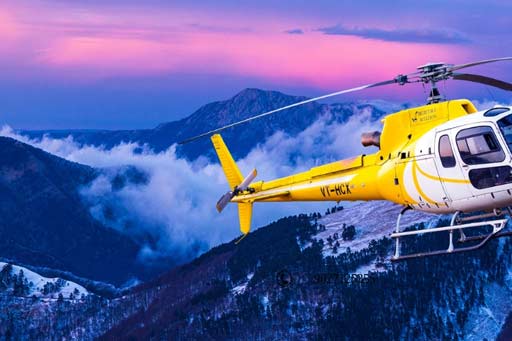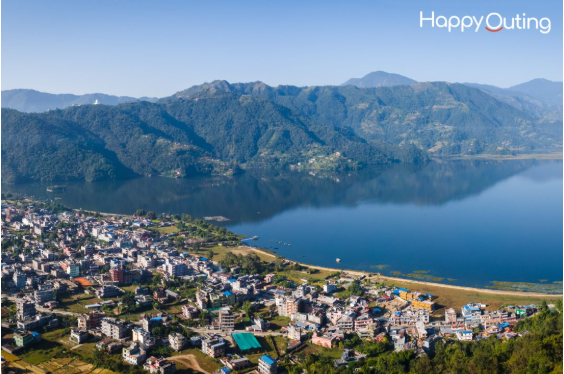The Chardham Yatra—encompassing the four sacred shrines of Yamunotri, Gangotri, Kedarnath, and Badrinath—is one of the most spiritually revered pilgrimages in India. Located in the high-altitude Himalayan region of Uttarakhand, the Chardham circuit is not only a journey of devotion but also of physical endurance. From narrow winding roads to unpredictable weather, your experience can vary dramatically depending on when you choose to go.
If you’re planning your trip, choosing the best time of year for good weather and safe travel is crucial. A well-timed yatra can make the difference between a smooth, awe-inspiring experience and a physically demanding, risky adventure.
In this guide, we’ll break down the Chardham travel season month by month so you can make an informed decision on the optimal time to visit.
Official Chardham Season
The Chardham temples remain open from late April/early May to early November, depending on the Hindu calendar and weather conditions. The opening and closing dates are announced each year by temple committees in alignment with Akshaya Tritiya (opening) and Bhai Dooj (closing).
This means the travel window is approximately 6 months, and each phase of the season has unique pros and cons.
Best Time for Good Weather and Safe Travel: May to Mid-June & Mid-September to Early October
1. Late April to Mid-June: The Spring and Early Summer Window
Weather Conditions:
- Mild and pleasant weather with daytime temperatures ranging from 12°C to 20°C in most places.
- Clear skies, minimal rain, and relatively warm sunshine during the day.
- Nights are cold but manageable, with temperatures dropping to 0–5°C.
Road and Trail Conditions:
- Roads are clear and open.
- Trails to Yamunotri and Kedarnath are dry and safe for trekking.
- Ideal for elderly pilgrims and first-time travelers.
Crowds:
- May is the peak month. Expect long queues at temples, especially around weekends and religious festivals.
- June sees continued high pilgrim turnout but begins to show signs of monsoon approaching.
Why It’s a Good Time:
- Perfect for families, elderly pilgrims, and anyone seeking a stable and comfortable travel experience.
- Most services, including helicopters, porters, and accommodations, operate at full capacity.
- Roads are safer, and landslides are rare.
Tips:
- Pre-book accommodation and transport.
- Start temple visits early in the morning to avoid queues.
2. Mid-September to Early October: Post-Monsoon Serenity
Weather Conditions:
- Crisp, cool air with clear views of the Himalayas.
- Daytime temperatures range from 10°C to 18°C; nights are colder (0–4°C).
- Little to no rainfall; ideal for photography and spiritual introspection.
Road and Trail Conditions:
- Monsoon-triggered landslides are generally cleared by this time.
- Trails are less muddy and safer than during monsoon.
Crowds:
- Fewer pilgrims compared to May-June.
- Temples are peaceful and less crowded, giving you more time for darshan and reflection.
Why It’s a Good Time:
- Excellent for those who want a quieter, more meditative experience.
- Weather is dry and cool—perfect for trekking, especially to Kedarnath and Yamunotri.
- Ideal for photographers and nature lovers.
Tips:
- Carry layered clothing to combat the cold.
- Travel with a buffer day in case of late monsoon effects in some areas.
Months to Be Cautious About
3. Late June to August: Monsoon Season
Weather Conditions:
- Heavy to very heavy rainfall across Uttarakhand.
- Frequent fog, low visibility, and slippery trails.
- High humidity and unpredictable weather.
Risks and Hazards:
- Landslides and flash floods are common.
- Roads may get washed out or blocked, causing delays.
- Trekking routes (especially to Kedarnath) can become dangerous or inaccessible.
- Helicopter services may be suspended due to low visibility.
Why to Avoid This Time:
- Unsafe for senior citizens, children, or those with health conditions.
- Accommodation and travel may be disrupted.
- Risk of getting stranded due to sudden road closures.
Tips (if you must travel):
- Keep multiple buffer days.
- Avoid night travel.
- Travel with a group or through an authorized tour operator who offers emergency support.
4. Mid to Late October: Onset of Winter
Weather Conditions:
- Day temperatures drop significantly.
- Nights are freezing (as low as -3°C to -5°C at Kedarnath and Yamunotri).
- Snowfall may begin, especially at higher elevations.
Accessibility Issues:
- Roads remain mostly open but become slippery with early frost.
- Some accommodation services begin to shut down for the season.
- Kedarnath may close earlier due to snow.
Why You Should Be Cautious:
- Cold weather can be harsh, especially for elderly travelers.
- Lesser medical support and fewer food/lodging options.
- Greater physical discomfort due to biting cold and reduced facilities.
Tips:
- Pack heavy winter gear.
- Confirm temple closing dates before travel.
- Monitor local weather alerts daily.
Temple-Specific Climate Considerations
Yamunotri & Kedarnath
- Higher altitude = colder and more unpredictable weather.
- Trekking routes can get snow-covered by early October.
Gangotri & Badrinath
- Slightly better road connectivity.
- These dhams remain accessible longer into the season.
What About the “Chardham by Helicopter” Option?
If you’re short on time or want to avoid the physical rigors of trekking, helicopter tours offer a convenient alternative. These are best scheduled in:
- May to mid-June
- Mid-September to early October
Helicopter services may not operate reliably during monsoon and late October due to visibility issues.
Summary: Month-by-Month Guide
| Month | Weather | Safety Level | Ideal For |
| Late April | Cold but clear | Safe | Early starters, low crowds |
| May | Pleasant, crowded | Very safe | Families, large groups, spiritual seekers |
| June (early) | Warm days | Safe | Ideal for temple visits before monsoon hits |
| July–August | Rainy, landslides | Risky | Best avoided unless absolutely necessary |
| Mid-September | Cool, clear | Very safe | Great for solo travelers, photographers |
| Early October | Crisp, quiet | Safe | Peaceful pilgrimage with low footfall |
| Late October | Very cold | Risky | Only for prepared, experienced travelers |
Final Thoughts
The Chardham Yatra is a once-in-a-lifetime spiritual journey, and timing is key to ensuring that it’s safe, comfortable, and fulfilling. If you’re looking for the best combination of weather, safety, and accessibility, then May to mid-June and mid-September to early October are your golden windows.
Always monitor weather forecasts, book services in advance, and travel with respect for nature and fellow pilgrims. With the right preparation and timing, the Himalayas will welcome you with open arms and blessings beyond measure.
Wishing you a safe and sacred journey on your Chardham Yatra!



